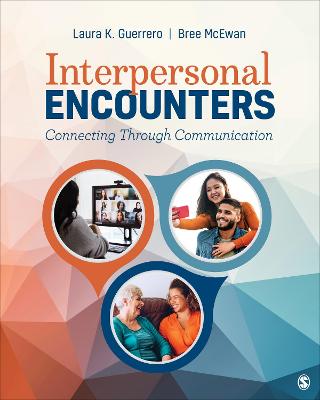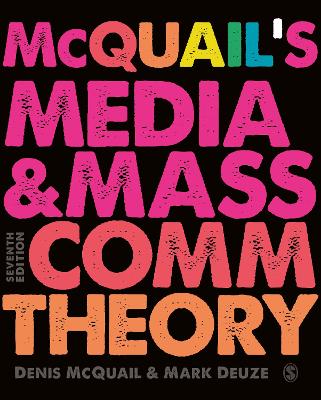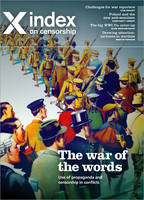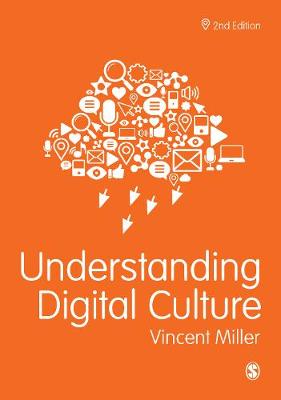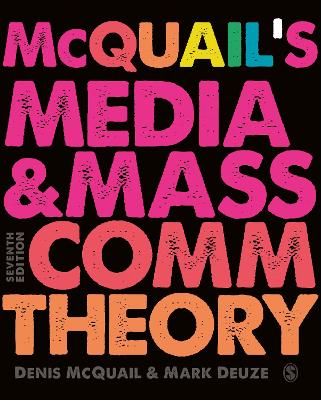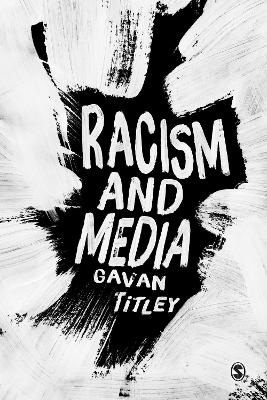Freedom of Expression in the Marketplace of Ideas
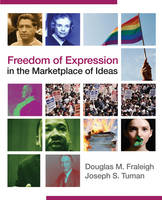 -15%
portes grátis
-15%
portes grátis
Freedom of Expression in the Marketplace of Ideas
Tuman, Joseph S.; Fraleigh, Douglas
SAGE Publications Inc
08/2010
472
Mole
Inglês
9781412974677
15 a 20 dias
710
Descrição não disponível.
Preface
List of Court Cases
1. Introduction to Freedom of Expression and the American Legal System
The Nature of Freedom of Speech
How Free Expression Rights Are Determined
Justifications and Critiques of Freedom of Expression
Conclusion
2. Historical Perspectives on Freedom of Expression
Free Expression in World Cultures
Freedom of Expression in America: 1600-1917
Conclusion
3. Incitement to Illegal Conduct and True Threats
The Clear and Present Danger Test
The Gitlow Decision Protects Freedom of Speech From State Abridgement
Freedom of Speech for Communists: Clear and Present Danger?
Brandenburg v. Ohio: Strengthening Protection of Speech
The Brandenburg Rule and Contemporary Communication
Distinguishing Incitement From True Threats
Conclusion
4. National Security and Freedom of Expression
A National Security Exception to the Constitution?
Government Efforts to Limit Free Expression in Wartime
Government Practices That Keep Information Secret
Government Surveillance of Its Citizens
Conclusion
5. Fighting Words and the Categorical Exceptions Doctrines
The Categorical Exceptions and Fighting Words Doctrines Are Announced in Chaplinsky
The Fighting Words Definition is Refined in Terminiello
The Definition of Fighting Words is Narrowed
R.A.V. v. City of St.Paul: Fighting Words and Categorical Exceptions Doctrines Live On
Conclusion
6. Hate Speech
The Problem of Hate Speech
Do Speech Codes Violate the First Amendment?
Thinking Critically About Hate Speech Regulation
Conclusion
7. Defamation: First Amendment Issues
New York Times v. Sullivan: The Actual Malice Rule
The New York Times Rule: Application of the Actual Malice Test
The New York Times Rule: Proof of Actual Malice
Beyond New York Times v. Sullivan: Additional First Amendment Protections
Has the Actual Malice Rule Served Its Purpose?
Conclusion
8. Obscenity and Child Pornography
Obscenity Not Protected by the First Amendment
1957-1973: The Supreme Court Struggles With Meaning of Obscenity
Court Majority Agrees on Obscenity
Does Context Influence Constitutional Protection?
Critical Thinking About Obscenity
Distinguishing Obscenity From Child Pornography
Conclusion
9. Time, Place, and Manner Restrictions
Historical Developments
The Modern Time, Place, and Manner Test
The Forums Held in Trust for Public Expression
Time, Place, or Manner Rules: Noteworthy Controversies
Conclusion
10. Symbolic Expression
The Benefits of Symbolic Expression
The Definitions of Symbolic Expression
The Test for Constitutional Protection of Symbolic Expression
Restrictions Related to Suppression: The Flag Burning Issue
Conclusion
11. Technology and the First Amendment
Medium-Specific Restrictions on Expression: Early History
Theories Used to Justify Broadcast Regulation
Regulation of Internet Communication
Conclusion
12. Privacy and Free Speech
Privacy and the Search for Penumbral Rights
The Right to Privacy in One's Self
The Right to Privacy Within the Home
Balancing a Right to Persuade With a Right to Privacy in Public Spaces Outside the Home
The Right to Informational Privacy
Conclusion
13. Access to Information
A Right of Access to Government Information
Journalists' Privilege
Access to Judicial Proceedings
Conclusion
14. Copyright and the First Amendment
Copyright Law in the United States
Copyright Law and the First Amendment
Copyright and New Technology
Conclusion
15. International and Comparative Perspectives on Freedom of Expression
The Global Freedom of Expression Landscape
Cultural Values and Free Expression Rights
Judicial Decisions on Freedom of Expression
Twenty-First Century Technology and International Freedom of Expression
Conclusion
Index
About the Authors
List of Court Cases
1. Introduction to Freedom of Expression and the American Legal System
The Nature of Freedom of Speech
How Free Expression Rights Are Determined
Justifications and Critiques of Freedom of Expression
Conclusion
2. Historical Perspectives on Freedom of Expression
Free Expression in World Cultures
Freedom of Expression in America: 1600-1917
Conclusion
3. Incitement to Illegal Conduct and True Threats
The Clear and Present Danger Test
The Gitlow Decision Protects Freedom of Speech From State Abridgement
Freedom of Speech for Communists: Clear and Present Danger?
Brandenburg v. Ohio: Strengthening Protection of Speech
The Brandenburg Rule and Contemporary Communication
Distinguishing Incitement From True Threats
Conclusion
4. National Security and Freedom of Expression
A National Security Exception to the Constitution?
Government Efforts to Limit Free Expression in Wartime
Government Practices That Keep Information Secret
Government Surveillance of Its Citizens
Conclusion
5. Fighting Words and the Categorical Exceptions Doctrines
The Categorical Exceptions and Fighting Words Doctrines Are Announced in Chaplinsky
The Fighting Words Definition is Refined in Terminiello
The Definition of Fighting Words is Narrowed
R.A.V. v. City of St.Paul: Fighting Words and Categorical Exceptions Doctrines Live On
Conclusion
6. Hate Speech
The Problem of Hate Speech
Do Speech Codes Violate the First Amendment?
Thinking Critically About Hate Speech Regulation
Conclusion
7. Defamation: First Amendment Issues
New York Times v. Sullivan: The Actual Malice Rule
The New York Times Rule: Application of the Actual Malice Test
The New York Times Rule: Proof of Actual Malice
Beyond New York Times v. Sullivan: Additional First Amendment Protections
Has the Actual Malice Rule Served Its Purpose?
Conclusion
8. Obscenity and Child Pornography
Obscenity Not Protected by the First Amendment
1957-1973: The Supreme Court Struggles With Meaning of Obscenity
Court Majority Agrees on Obscenity
Does Context Influence Constitutional Protection?
Critical Thinking About Obscenity
Distinguishing Obscenity From Child Pornography
Conclusion
9. Time, Place, and Manner Restrictions
Historical Developments
The Modern Time, Place, and Manner Test
The Forums Held in Trust for Public Expression
Time, Place, or Manner Rules: Noteworthy Controversies
Conclusion
10. Symbolic Expression
The Benefits of Symbolic Expression
The Definitions of Symbolic Expression
The Test for Constitutional Protection of Symbolic Expression
Restrictions Related to Suppression: The Flag Burning Issue
Conclusion
11. Technology and the First Amendment
Medium-Specific Restrictions on Expression: Early History
Theories Used to Justify Broadcast Regulation
Regulation of Internet Communication
Conclusion
12. Privacy and Free Speech
Privacy and the Search for Penumbral Rights
The Right to Privacy in One's Self
The Right to Privacy Within the Home
Balancing a Right to Persuade With a Right to Privacy in Public Spaces Outside the Home
The Right to Informational Privacy
Conclusion
13. Access to Information
A Right of Access to Government Information
Journalists' Privilege
Access to Judicial Proceedings
Conclusion
14. Copyright and the First Amendment
Copyright Law in the United States
Copyright Law and the First Amendment
Copyright and New Technology
Conclusion
15. International and Comparative Perspectives on Freedom of Expression
The Global Freedom of Expression Landscape
Cultural Values and Free Expression Rights
Judicial Decisions on Freedom of Expression
Twenty-First Century Technology and International Freedom of Expression
Conclusion
Index
About the Authors
Este título pertence ao(s) assunto(s) indicados(s). Para ver outros títulos clique no assunto desejado.
Fraleigh;Tuman
Preface
List of Court Cases
1. Introduction to Freedom of Expression and the American Legal System
The Nature of Freedom of Speech
How Free Expression Rights Are Determined
Justifications and Critiques of Freedom of Expression
Conclusion
2. Historical Perspectives on Freedom of Expression
Free Expression in World Cultures
Freedom of Expression in America: 1600-1917
Conclusion
3. Incitement to Illegal Conduct and True Threats
The Clear and Present Danger Test
The Gitlow Decision Protects Freedom of Speech From State Abridgement
Freedom of Speech for Communists: Clear and Present Danger?
Brandenburg v. Ohio: Strengthening Protection of Speech
The Brandenburg Rule and Contemporary Communication
Distinguishing Incitement From True Threats
Conclusion
4. National Security and Freedom of Expression
A National Security Exception to the Constitution?
Government Efforts to Limit Free Expression in Wartime
Government Practices That Keep Information Secret
Government Surveillance of Its Citizens
Conclusion
5. Fighting Words and the Categorical Exceptions Doctrines
The Categorical Exceptions and Fighting Words Doctrines Are Announced in Chaplinsky
The Fighting Words Definition is Refined in Terminiello
The Definition of Fighting Words is Narrowed
R.A.V. v. City of St.Paul: Fighting Words and Categorical Exceptions Doctrines Live On
Conclusion
6. Hate Speech
The Problem of Hate Speech
Do Speech Codes Violate the First Amendment?
Thinking Critically About Hate Speech Regulation
Conclusion
7. Defamation: First Amendment Issues
New York Times v. Sullivan: The Actual Malice Rule
The New York Times Rule: Application of the Actual Malice Test
The New York Times Rule: Proof of Actual Malice
Beyond New York Times v. Sullivan: Additional First Amendment Protections
Has the Actual Malice Rule Served Its Purpose?
Conclusion
8. Obscenity and Child Pornography
Obscenity Not Protected by the First Amendment
1957-1973: The Supreme Court Struggles With Meaning of Obscenity
Court Majority Agrees on Obscenity
Does Context Influence Constitutional Protection?
Critical Thinking About Obscenity
Distinguishing Obscenity From Child Pornography
Conclusion
9. Time, Place, and Manner Restrictions
Historical Developments
The Modern Time, Place, and Manner Test
The Forums Held in Trust for Public Expression
Time, Place, or Manner Rules: Noteworthy Controversies
Conclusion
10. Symbolic Expression
The Benefits of Symbolic Expression
The Definitions of Symbolic Expression
The Test for Constitutional Protection of Symbolic Expression
Restrictions Related to Suppression: The Flag Burning Issue
Conclusion
11. Technology and the First Amendment
Medium-Specific Restrictions on Expression: Early History
Theories Used to Justify Broadcast Regulation
Regulation of Internet Communication
Conclusion
12. Privacy and Free Speech
Privacy and the Search for Penumbral Rights
The Right to Privacy in One's Self
The Right to Privacy Within the Home
Balancing a Right to Persuade With a Right to Privacy in Public Spaces Outside the Home
The Right to Informational Privacy
Conclusion
13. Access to Information
A Right of Access to Government Information
Journalists' Privilege
Access to Judicial Proceedings
Conclusion
14. Copyright and the First Amendment
Copyright Law in the United States
Copyright Law and the First Amendment
Copyright and New Technology
Conclusion
15. International and Comparative Perspectives on Freedom of Expression
The Global Freedom of Expression Landscape
Cultural Values and Free Expression Rights
Judicial Decisions on Freedom of Expression
Twenty-First Century Technology and International Freedom of Expression
Conclusion
Index
About the Authors
List of Court Cases
1. Introduction to Freedom of Expression and the American Legal System
The Nature of Freedom of Speech
How Free Expression Rights Are Determined
Justifications and Critiques of Freedom of Expression
Conclusion
2. Historical Perspectives on Freedom of Expression
Free Expression in World Cultures
Freedom of Expression in America: 1600-1917
Conclusion
3. Incitement to Illegal Conduct and True Threats
The Clear and Present Danger Test
The Gitlow Decision Protects Freedom of Speech From State Abridgement
Freedom of Speech for Communists: Clear and Present Danger?
Brandenburg v. Ohio: Strengthening Protection of Speech
The Brandenburg Rule and Contemporary Communication
Distinguishing Incitement From True Threats
Conclusion
4. National Security and Freedom of Expression
A National Security Exception to the Constitution?
Government Efforts to Limit Free Expression in Wartime
Government Practices That Keep Information Secret
Government Surveillance of Its Citizens
Conclusion
5. Fighting Words and the Categorical Exceptions Doctrines
The Categorical Exceptions and Fighting Words Doctrines Are Announced in Chaplinsky
The Fighting Words Definition is Refined in Terminiello
The Definition of Fighting Words is Narrowed
R.A.V. v. City of St.Paul: Fighting Words and Categorical Exceptions Doctrines Live On
Conclusion
6. Hate Speech
The Problem of Hate Speech
Do Speech Codes Violate the First Amendment?
Thinking Critically About Hate Speech Regulation
Conclusion
7. Defamation: First Amendment Issues
New York Times v. Sullivan: The Actual Malice Rule
The New York Times Rule: Application of the Actual Malice Test
The New York Times Rule: Proof of Actual Malice
Beyond New York Times v. Sullivan: Additional First Amendment Protections
Has the Actual Malice Rule Served Its Purpose?
Conclusion
8. Obscenity and Child Pornography
Obscenity Not Protected by the First Amendment
1957-1973: The Supreme Court Struggles With Meaning of Obscenity
Court Majority Agrees on Obscenity
Does Context Influence Constitutional Protection?
Critical Thinking About Obscenity
Distinguishing Obscenity From Child Pornography
Conclusion
9. Time, Place, and Manner Restrictions
Historical Developments
The Modern Time, Place, and Manner Test
The Forums Held in Trust for Public Expression
Time, Place, or Manner Rules: Noteworthy Controversies
Conclusion
10. Symbolic Expression
The Benefits of Symbolic Expression
The Definitions of Symbolic Expression
The Test for Constitutional Protection of Symbolic Expression
Restrictions Related to Suppression: The Flag Burning Issue
Conclusion
11. Technology and the First Amendment
Medium-Specific Restrictions on Expression: Early History
Theories Used to Justify Broadcast Regulation
Regulation of Internet Communication
Conclusion
12. Privacy and Free Speech
Privacy and the Search for Penumbral Rights
The Right to Privacy in One's Self
The Right to Privacy Within the Home
Balancing a Right to Persuade With a Right to Privacy in Public Spaces Outside the Home
The Right to Informational Privacy
Conclusion
13. Access to Information
A Right of Access to Government Information
Journalists' Privilege
Access to Judicial Proceedings
Conclusion
14. Copyright and the First Amendment
Copyright Law in the United States
Copyright Law and the First Amendment
Copyright and New Technology
Conclusion
15. International and Comparative Perspectives on Freedom of Expression
The Global Freedom of Expression Landscape
Cultural Values and Free Expression Rights
Judicial Decisions on Freedom of Expression
Twenty-First Century Technology and International Freedom of Expression
Conclusion
Index
About the Authors
Este título pertence ao(s) assunto(s) indicados(s). Para ver outros títulos clique no assunto desejado.



